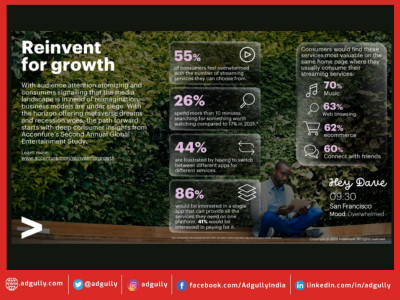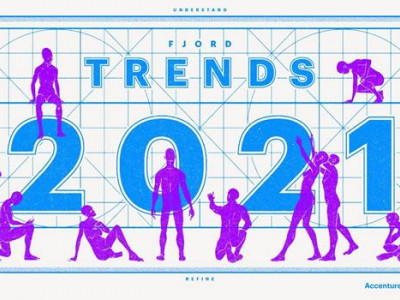78% drop in Indian viewers who prefer to watch shows on TV sets: Accenture
Accenture’s Digital Consumer Survey, titled ‘Winning Experiences in the New Video World’, survey reveals a particularly steep decline over the past year in the percentage of India’s consumers who prefer to view TV shows on TV sets; which dropped 78 per cent – from 47 per cent to 10 per cent – signalling an accelerating shift in the digital video market consumer behaviour. In the US, the number fell 57 per cent (from 59 per cent to 25 per cent), while in the UK, it dropped 55 per cent (from 56 per cent to 25 per cent).
“Over the past one year we have seen a surge in the launch of over-the-top services both, by global and Indian media and entertainment companies. The ever increasing penetration of the Internet mainly through mobile, backed by WiFi and broadband has helped this wave. This, coupled with high-quality content hosted by the content providers, has enticed the Indian consumers to view varied content both live broadcast and video-on-demand (VOD) on different devices,” said Aditya Chaudhuri, Managing Director and lead for Accenture’s communications, media and technology group in India.
The global online survey of 26,000 consumers in 26 countries reveals that consumers increasingly prefer to watch TV shows on devices such as laptop and desktop personal computers and smartphones. More than four in 10 consumers (42 per cent) said they would rather view TV shows on a laptop or desktop, up from 32 per cent in last year’s survey. 13 per cent said they prefer watching TV shows on their smartphones, compared to 10 per cent last year. (These findings are derived from a multiple-choice question answered by survey participants: “Which types of device (s) do you prefer to use when accessing different types of content?” The options included ‘laptop and desktop personal computers,’ ‘smartphones,’ ‘tablets,’ ‘TV screens,’ ‘game consoles,’ ‘other’ and ‘none’.)
The decline in TV viewing over the past year tracks with a four-year trend. As recently as 2014, the survey revealed that nearly two-thirds (65 per cent) of consumers preferred the TV set for viewing TV shows.
The most-recent findings show that only one in five consumers (19 per cent) now prefer to watch sports games on their TVs, down from 38 per cent in the prior-year survey.
While consumers increasingly prefer to watch TV shows on laptops and desktops, the smartphone is becoming the preferred device for watching short video clips. In the most-recent survey, more than one-third (41 per cent) of consumers said they would rather view these clips on their mobile handsets, a substantial increase from 28 per cent last year. In contrast, the number of consumers who said they would rather watch video clips on their laptops and desktops dropped slightly, from 47 per cent to 44 per cent over the last year, while the number who said they prefer to view these clips on their TV sets dropped even more, from 16 per cent to only 5 per cent.
The report makes several recommendations for how media companies should respond to the shift in consumers’ video consumption habits from TV sets to other devices. These include:
Identifying new ways to engage consumers with more-personalised video content across more types of screens;
Using more granular consumer data, segments and predictive analytics to help anticipate consumer preferences and find content they desire; and
Focusing more on their target audiences to identify exactly what content their viewers want to receive – and when, for how long and on what type of screen.
Methodology
Between October and November 2016, Accenture conducted an online survey with approximately 26,000 consumers in 26 countries: Australia, Brazil, Canada, China, Czech Republic, France, Germany, Hungary, India, Ireland, Italy, Japan, Mexico, Netherlands, Poland, Romania, Saudi Arabia, Singapore, Slovakia, South Africa, Spain, Sweden, Turkey, United Arab Emirates, the United Kingdom and the United States.
The sample in each country was representative of the online population. Ages of respondents ranged from 14 to 55 and over. The survey and related data modelling quantify consumer perceptions of digital devices, content and services, purchasing patterns, preference and trust in service providers, and the future of their connected lifestyles.
















Share
Facebook
YouTube
Tweet
Twitter
LinkedIn